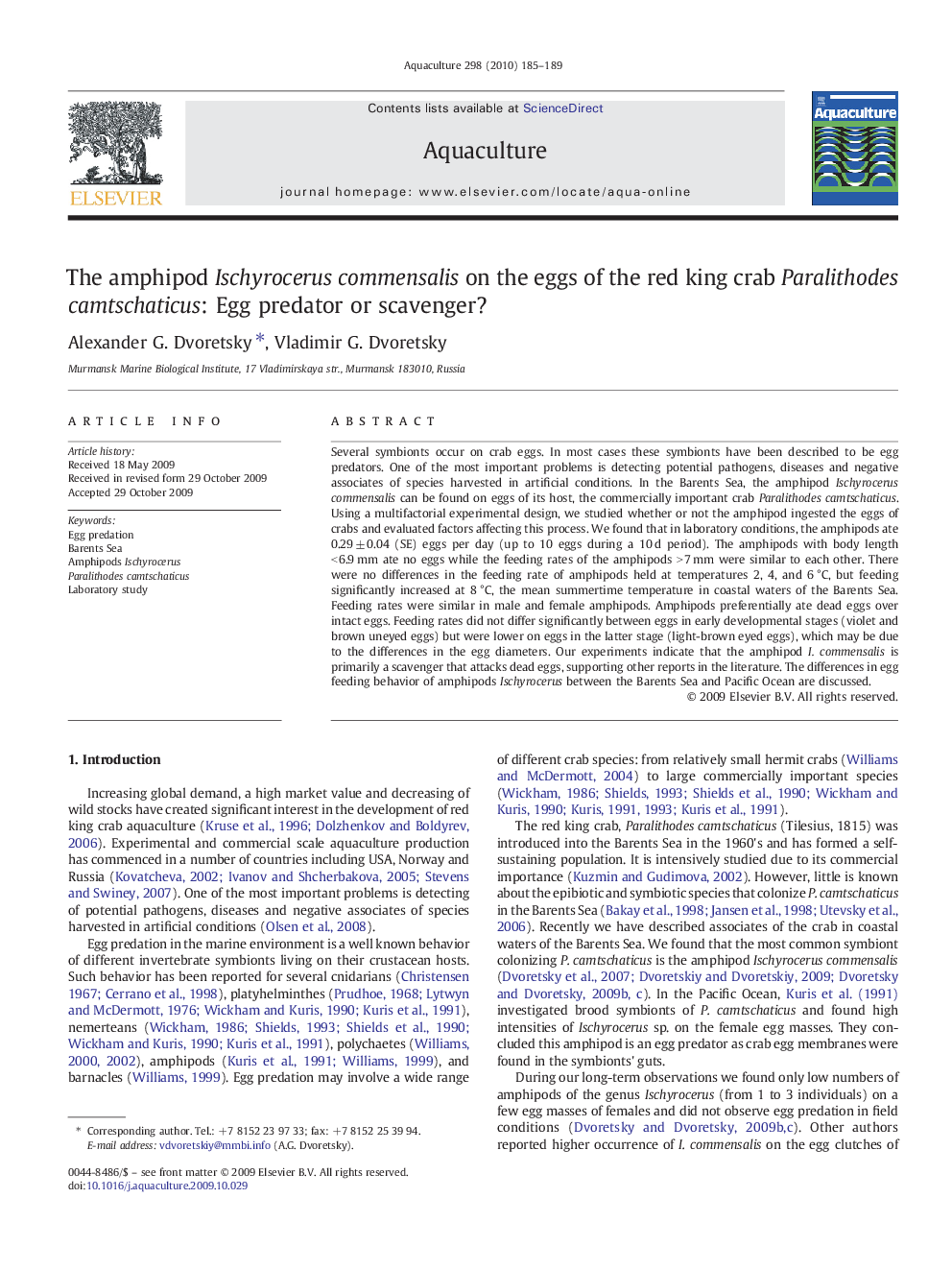| Article ID | Journal | Published Year | Pages | File Type |
|---|---|---|---|---|
| 2423901 | Aquaculture | 2010 | 5 Pages |
Several symbionts occur on crab eggs. In most cases these symbionts have been described to be egg predators. One of the most important problems is detecting potential pathogens, diseases and negative associates of species harvested in artificial conditions. In the Barents Sea, the amphipod Ischyrocerus commensalis can be found on eggs of its host, the commercially important crab Paralithodes camtschaticus. Using a multifactorial experimental design, we studied whether or not the amphipod ingested the eggs of crabs and evaluated factors affecting this process. We found that in laboratory conditions, the amphipods ate 0.29 ± 0.04 (SE) eggs per day (up to 10 eggs during a 10 d period). The amphipods with body length < 6.9 mm ate no eggs while the feeding rates of the amphipods > 7 mm were similar to each other. There were no differences in the feeding rate of amphipods held at temperatures 2, 4, and 6 °C, but feeding significantly increased at 8 °C, the mean summertime temperature in coastal waters of the Barents Sea. Feeding rates were similar in male and female amphipods. Amphipods preferentially ate dead eggs over intact eggs. Feeding rates did not differ significantly between eggs in early developmental stages (violet and brown uneyed eggs) but were lower on eggs in the latter stage (light-brown eyed eggs), which may be due to the differences in the egg diameters. Our experiments indicate that the amphipod I. commensalis is primarily a scavenger that attacks dead eggs, supporting other reports in the literature. The differences in egg feeding behavior of amphipods Ischyrocerus between the Barents Sea and Pacific Ocean are discussed.
